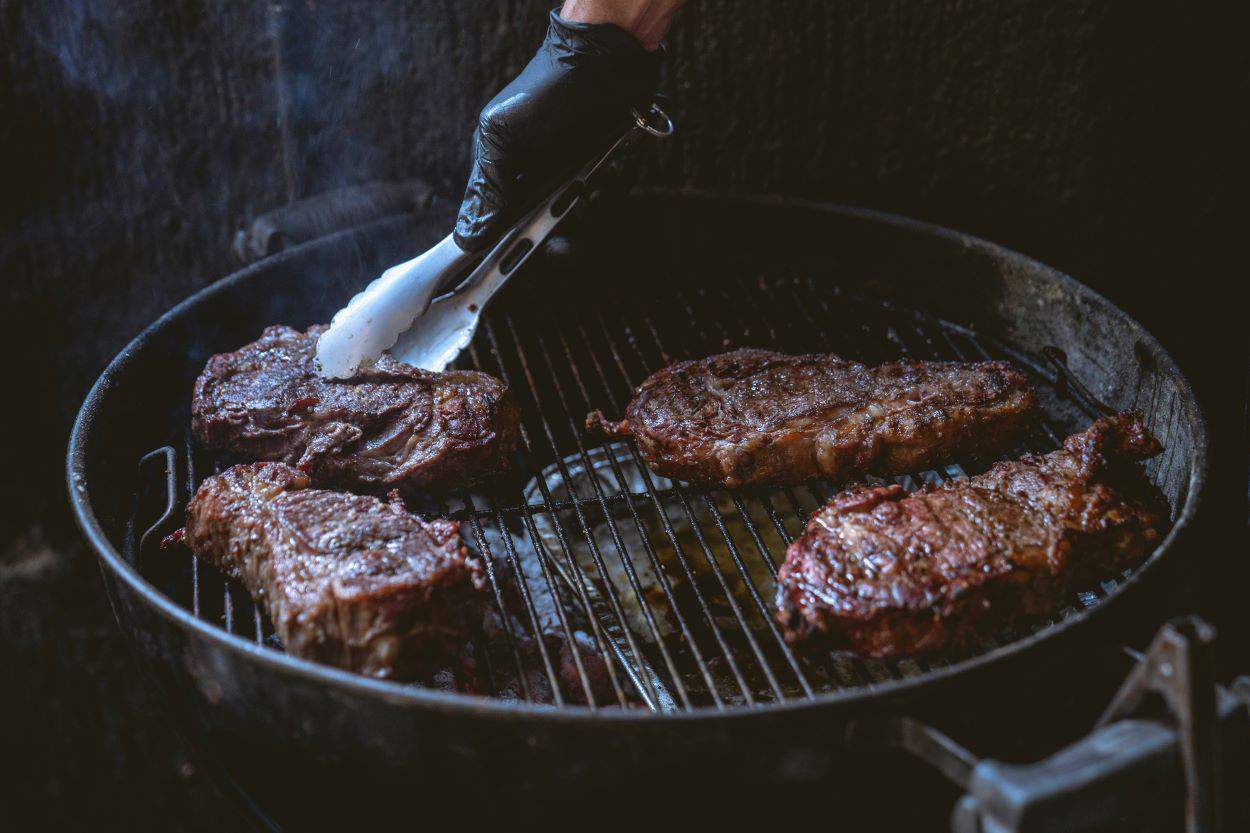
What Are the Dos and Don’ts of Using a BBQ Thermometer?
Each time you grill meat, make sure the inside and outside cook to perfection. Do not gauge its doneness by its firmness or outside appearance. Even if the outside of meat browns well, it could very well be raw inside. That’s why you require a BBQ thermometer when grilling meat.
It will tell you when the internal temperature of the meat is accurate. Never undercook or overcook your favorite meat. Get the best remote thermometer and other vital grilling essentials to cook meat like a professional chef. After that, you should know the dos and don’ts of using a meat thermometer. We will explain these below.
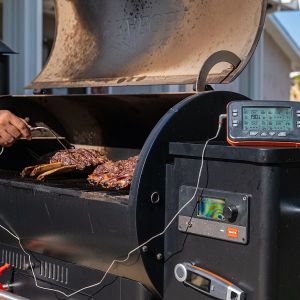
Dos and don’ts when using a BBQ thermometer
You may have the most accurate and valuable instant read thermometer. However, if you do not know how to use it well, it can be useless when smoking meat. To help you use your kitchen thermometer well, we will discuss things to do and not to do.
Things to do when using the best meat thermometer
To highly benefit from your thermometer, do the following four things:
1. Ensure it is the correct BBQ thermometer for your needs
Only you know what you like to cook often on your grill. If it is meat, choose the meat-only thermometer. The device is ideal for cooking meat. So it has a probe for piercing meat to check the internal cooking temperature. A probe thermometer will do a better job than any food thermometer. When looking for a device to buy, consider old-fashioned dial thermometers and modern digital thermometers.
The dial thermometer is not the best when smoking meat because it is a slow manual system. The digital one is more advanced because it can produce readings within seconds. Faster reading means that you can check the internal cooking temps without allowing a lot of heat to dissipate. When selecting the best digital food thermometer, you will find wired and wireless options.
Gadgets in each category have unique features and capabilities. To work as the meat cooks, select a wireless thermometer. You will still keep the grill door closed and monitor your meat as it cooks. A programmable smoker thermometer that can transmit alerts 300 to 500 feet away from the cooker is the best choice. See a good choice below.
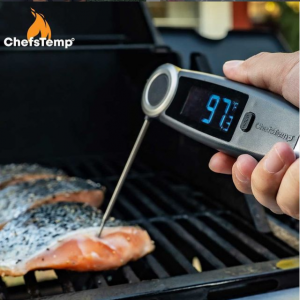
2. Understand where to place the BBQ thermometer
There are different kinds of meat you can grill. However, the simplest rule to follow for best results is to insert the probe into the thickest part of the meat. The fattest area will take longer to cook, so there is always the risk of leaving it raw. When smoking multiple cuts of meat, measure the internal temperatures of the thickest pieces. When grilling chicken, for example, take the internal cooking temperature of the breast.
It is because chicken breast is the thickest part. Sometimes you need to grill a single large cut of meat. Whether cooking ribs or brisket, it needs to cook inside and outside to be safe for human consumption. The best meat thermometer can help you check the internal temperature of different areas of the meat.
3. Study the food temperature chart to recognize the safest food temperatures
Even the most experienced and recognized chef uses a BBQ thermometer. No matter how tempted you are to check food temperatures manually, avoid it. Always trust the thermometer to produce accurate readings for your meat as it cooks. Even if you have a thermometer, also use a food temperature chart.
It will tell you the correct temperatures to use when cooking poultry, pork, beef, lamb, veal, ground meat, and so on. If you cook all kinds of meat, get familiar with safe cooking temps for all of them. Here is the list we are talking about:
- Beef, lamb, or veal (roasts, steak, or chops) – 145°F (63°C)
- Ground veal, lamb, or beef – 160°F (71°C)
- Ground chicken or turkey – 165°F (74°C)
- Pork – 145°F (63°C)
- Any poultry meat – 165°F (74°C)
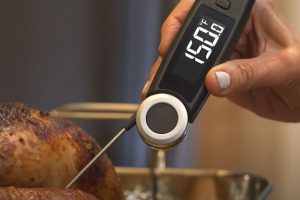
Additionally, consider checking doneness levels when cooking your steak. These include Rare, Medium Rare, Medium, Medium-Well, and Well Done. Without all this information, you risk cooking unsafe food for your people.
4. Always set an alarm
It is easy to forget that you are smoking food when using the best food thermometer for remote cooking. After all, you expect an alert when the food reaches the desired temperature. Unfortunately, it will be up to you to set the alarm. If you forget to set the alarm, you will not get an alert, and your meat may overcook. Once you program your thermometer to the best internal cooking temperature and doneness, it will send you an alarm.
Things not to do when using a BBQ thermometer
Here are the don’ts when using an instant read meat thermometer.
1. Do not touch the bone, fat, grill with a thermometer
When checking the internal temps of meat with a probe thermometer, do not touch the bone, fat, grill, or any other surface. It will let you avoid inconsistent temperature readings. Meat gets hot before the bone. So, the bone’s temperature will be ten degrees F lower than other sections of meat.
2. Do not forget to pull out the meat earlier
It is easy to blame bad cooking on your thermometer. However, your thermometer is not to blame if you forget to remove your meat a few minutes before it reaches the safest minimum temperature. When you remove meat before the time lapses, the residue temperature within it will cook it fully. It is necessary to pull out large cuts of meat from the smoker and let them cook for 5 to 10 minutes before serving.
3. Do not ignore checking the internal temperatures in different areas
When smoking a whole chicken, or a large steak, it is safe to take the temperature of the thickest part. However, you should also spot-check temps in different areas. If you have the best instant read thermometer with many channels, you can insert the probe in various parts of meat at once.
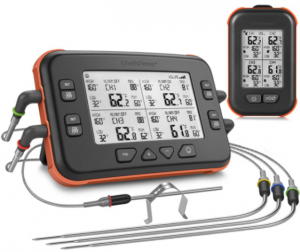
Conclusion
A bonus thing to do to your electronic meat thermometer often is to check its level of accuracy. Always carry out the boiling water and ice cube tests to measure the accuracy level of your thermometer. Re-calibrate it often to ensure you can trust its readings when cooking. So far you know the things you can do and the things you cannot do when using your BBQ thermometer. Follow these tips to always cook your meats to perfection.
Discover Other ChefsTemp Products
Discover more recipes and learn kitchen tricks by joining our cooking family on Facebook.
You may also like:















